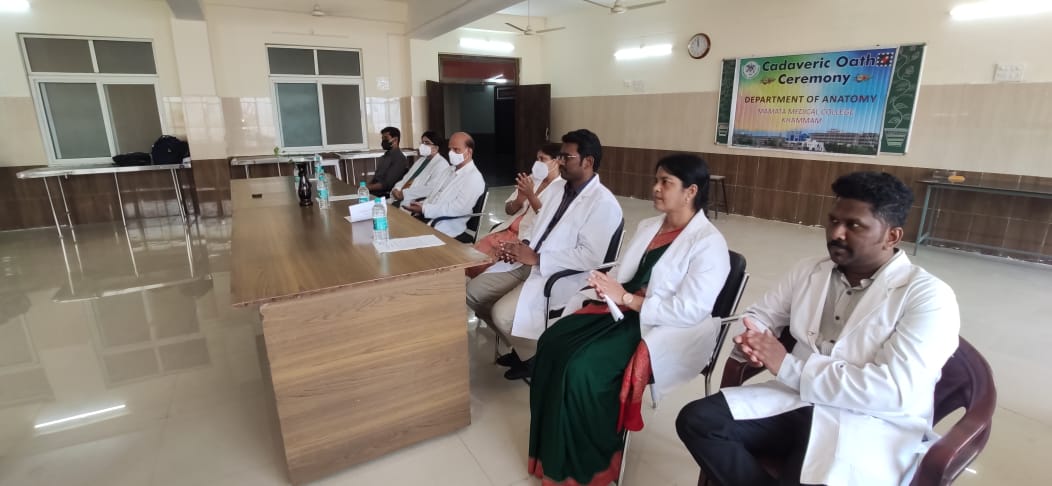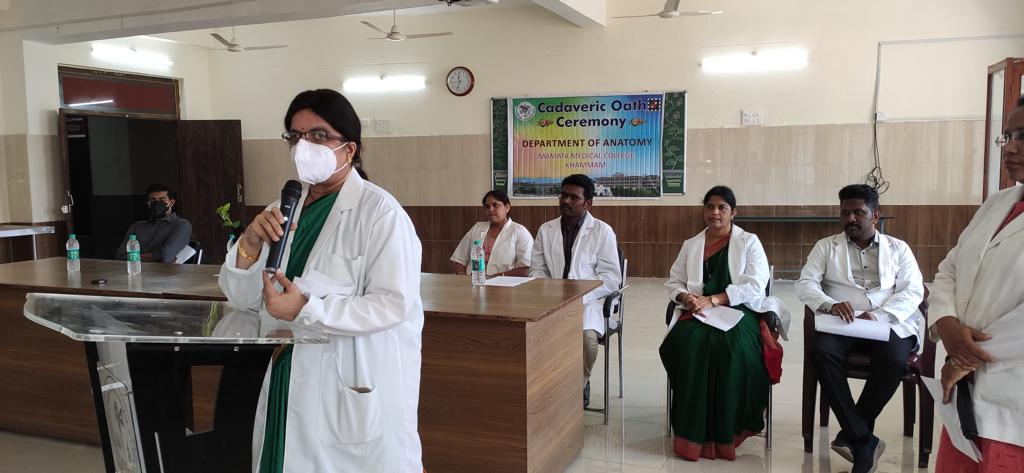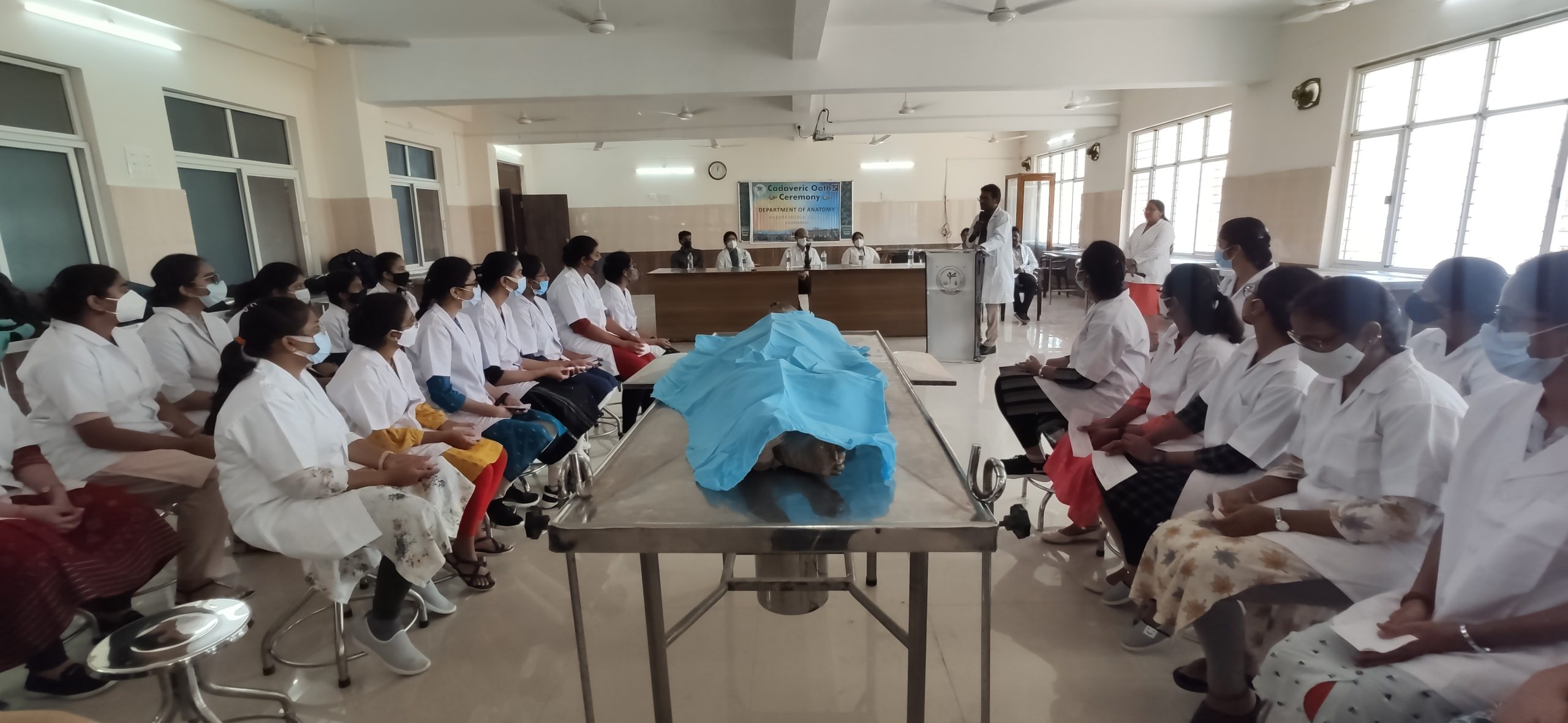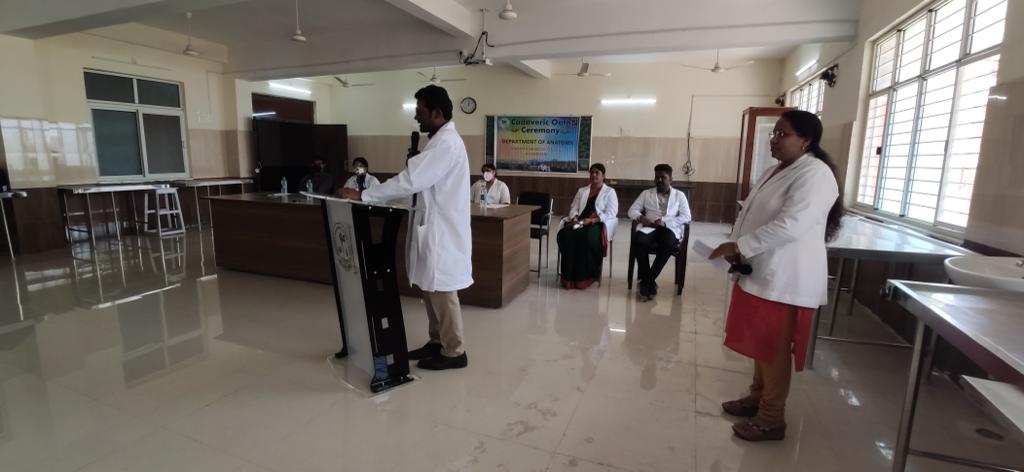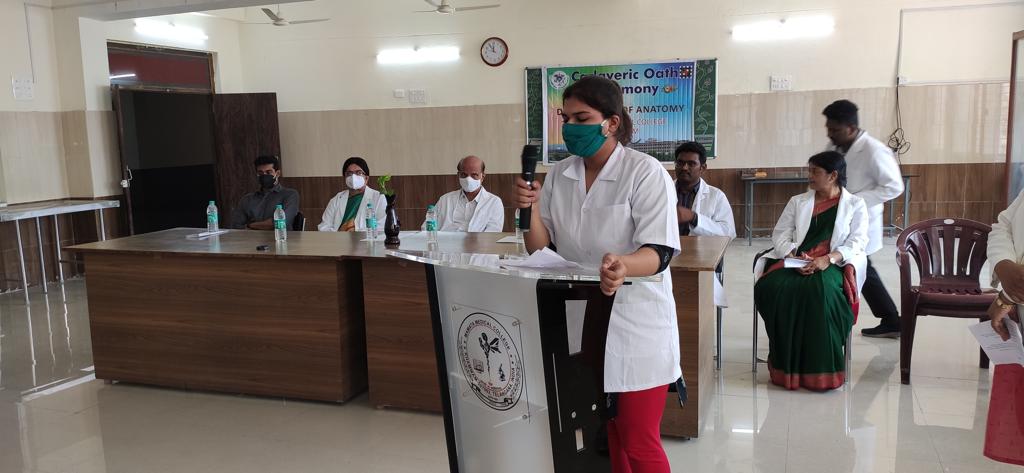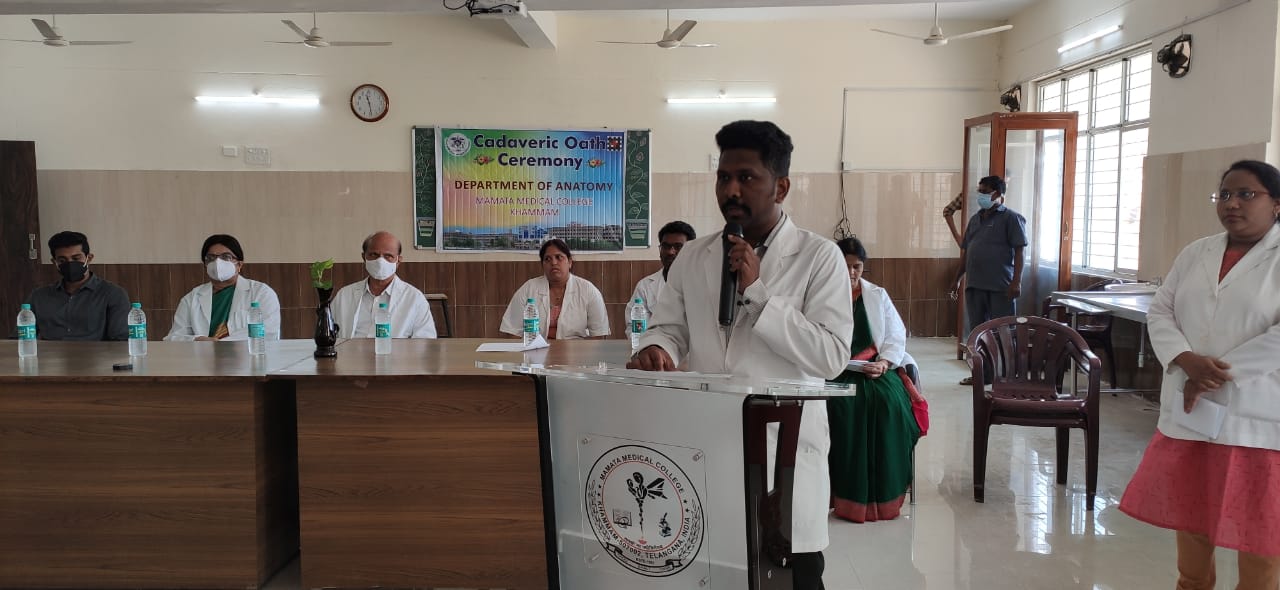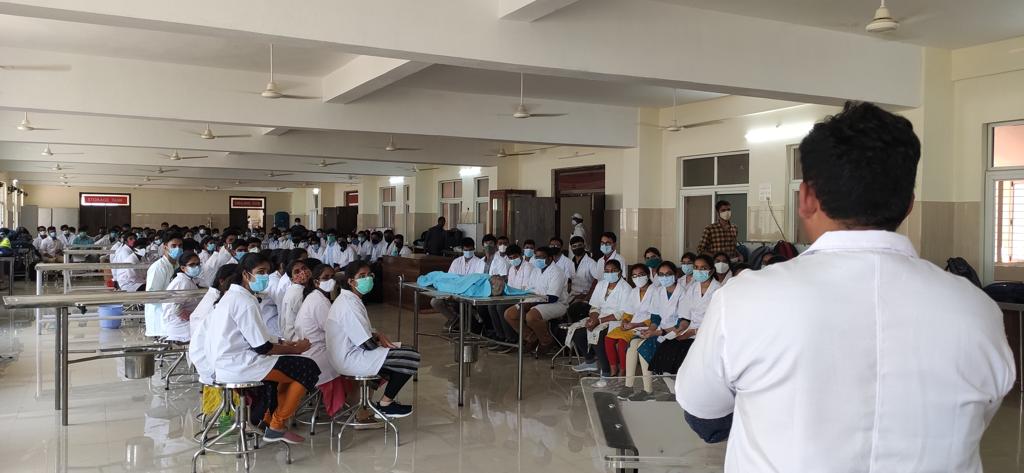Human body is called moving museum itself.
Human Anatomy is taught by whole-body dissection wherein the students in medical colleges get a chance to dissect the cadaver as a part of their curriculum.
A cadaver is a dead human body that is used by medical professionals and other scientists to study anatomy, identify disease sites, determine causes of death, and provide tissue to repair a defect in a living human being.
These cadavers were alive once and did their bit of service to mankind and even after death they are doing the same. So, we should respect those who voluntarily donated their bodies for the welfare of future generation. Cadaver is considered as first patient, first teacher and silent teacher as learning through cadaveric dissection helps students build teamwork while learning
Cadaveric Oath is a pledge that a medical student takes before touching the cadaver in the dissection hall; the oath emphases on proper handling of the cadaver, paying tribute to the soul and to knot the idea of empathy in the young medicos’ minds.A cadaveric oath becomes an essential part of medical curriculum to express student’s respect and gratitude towards donors and their families.
Dissection of cadavers started in 3rd century but it was more during 18th century. Burke and Hare murdered 16 people realizing the profit and sold the bodies to Robert Knox’s Anatomy classroom in Edinburgh and even robbed the graves. After the prosecution, the dissection of cadavers was legalised in 1832 by creating Anatomy Act for Voluntary Body Donation. In India, the act was enabled in 1948 in Maharashtra.
The cadaveric oath programme was first started in 2018 in Mamata Medical College Khammam with the objective of sensitising the new medical students to respect cadaver as their first teacher.


